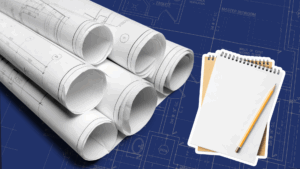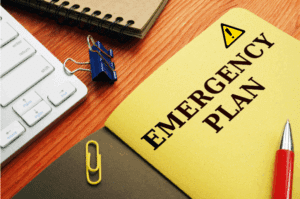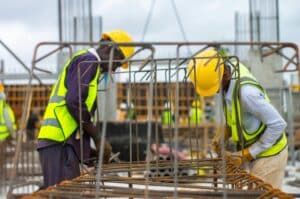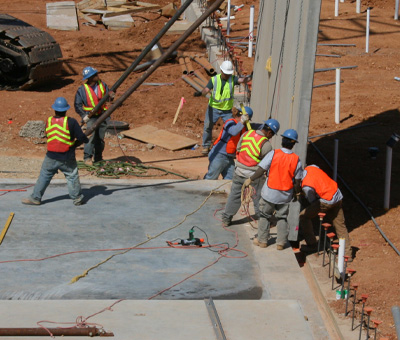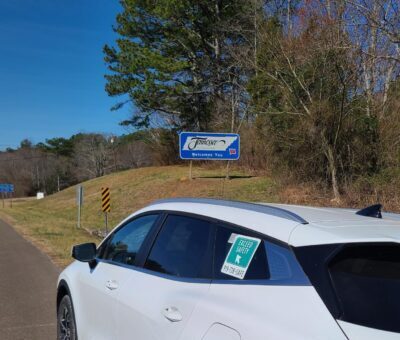Choosing the most effective method for traffic control through construction zones is a critical safety decision. This choice often boils down to one of two options: employing flaggers or utilizing automated lights. While both strategies aim to ensure safe passage for vehicles, they offer distinct benefits and challenges.
The Traffic Control Debate
At the heart of construction zone traffic control lies the choice between human intuition and technological efficiency. Flaggers play a pivotal role, stationed at strategic points to guide vehicles with signals for stopping, slowing, or proceeding with caution. Their presence adds a layer of human judgment and flexibility. This allows for real-time adjustments based on immediate traffic conditions and cues from the construction crew. The key advantages of flaggers is the personalized approached to traffic control. Their visibility, presence, and the ability to communicate directly with drivers and constructions personnel makes them an asset onsite.
Conversely, automated traffic lights remove the need for human presence, addressing safety concerns for workers in potentially hazardous conditions. Equipped with sensors and timers, these systems offer a standardized and predictable method for traffic management, operating around the clock. Automated lights are consistent, able to be monitored remotely, and provide overall efficiency in controlling the flow of vehicles through work areas.
Influencing Factors
The decision between flaggers and automated lights involves a thorough evaluation of several key factors:
- Site Layout: The decision-making process must consider the construction site’s size, complexity, and layout. Traffic volume, speed limits, and environmental conditions play a crucial role in determining the most suitable traffic control method.
- Cost and Resources: Both the initial investment and ongoing maintenance costs of the chosen solution must be weighed against budget and resources.
- Stakeholder Input: Valuable insight can be gained from construction crews, traffic engineers, local authorities, and the community. This ensures that the selected approach aligns with project objectives and public needs.
Making an Informed Choice
Selecting the right traffic control method is a nuanced decision. Site-specific conditions, safety requirements, cost considerations, and stakeholder perspectives are all influencing factors. Above all, prioritizing safety should be key. By carefully weighing the advantages and limitations of each option, construction projects can navigate the challenges of traffic management effectively. This thoughtful deliberation ensures not only the safety of workers and motorists but also minimizes disruptions, promoting a smooth and efficient construction process.
Ultimately, the choice between flaggers and automated lights is more than a matter of preference—it’s a strategic decision that affects the safety and efficiency of construction projects. Through thoughtful consideration of the unique aspects of each project, stakeholders can make informed decisions that best serve their specific needs, ensuring the safety and well-being of all involved.
UPDATE 5/2024: This post has been updated for comprehension and clarity.
Building Safety from the Start with Prevention Through Design
In workplace safety, the best results come from stopping hazards before they ever reach employees. While training, procedures, and personal protective equipment (PPE) are important, the most effective approach is to design hazards out of the workplace from the beginning. This approach is known as Prevention through Design (PtD). What is Prevention through Design? Prevention…
Continue Reading Building Safety from the Start with Prevention Through Design
Emergency Preparedness: Staying Ready
Whether a misstep causes a fall or a natural disaster causes an evacuation, emergencies happen. Emergency preparedness and response can mean the difference in avoiding an injury or ending with a fatality. Emergencies come with little to no warning. While we may think these are extreme situations that will “never” happen to us, the reality…
Continuous Improvement and Immersive Training in Action
Construction is a dangerous business. Risks are constant, standards shift, and complacency can be deadly. For Jennifer Lastra, a U.S. Navy veteran and current CEO of 360 Immersive, corporate-style training falls far short. True safety begins with continuous improvement, supported by real engagement on the job. Training Should Go Beyond a Click-Through Box “Corporate training…
Continue Reading Continuous Improvement and Immersive Training in Action

